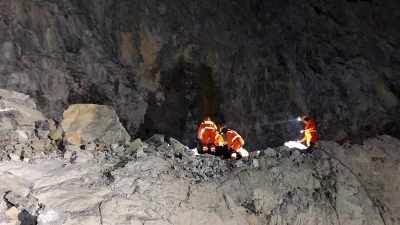Doubts over tourism in Antarctica
With the rapid rise of ship tourism in Antarctica, the sinking of the Explorer last week was not unanticipated.

With the rapid rise of ship tourism in Antarctica, the sinking of the Explorer last week was not unanticipated. Launched in 1969 under the name Lindblad Explorer, it was the first ship built specifically to ferry tourists to Antarctica. Both the United States and Britain warned a conference of Antarctic treaty nations in May that the tourism situation in the region was a potential disaster in the making.
More than 35,000 tourists are expected to visit Antarctica this spring and summer, compared with just 6,750 during 1992-93, according to the Antarctic Treaty Secretariat. And rather than just ships like the Explorer that carry 100 passengers, the flotilla has included such behemoths of the cruise ship industry as the Golden Princess, which arrived with 2,500 passengers and 1,200 crew members last season.
Relatively calm seas, the slow pace of the Explorer’s sinking and its proximity to other ships and military rescue forces all helped ensure that the episode was not a disaster, at least in human terms. While the rescue may have been a success, the consequences for the Antarctic’s fragile environment of having a submerged ship with an estimated 48,000 gallons of marine diesel fuel sitting off its coast are unclear.
And while the frontier nature of Antarctica is a large part of its tourist appeal, it also means that the region is a legal muddle. There are no obvious answers about who is responsible for dealing with any environmental damage the Explorer may cause or how methods can be created to prevent future sinkings.
“There’s been kind of an explosion of tourism in Antarctica,” said Jim Barnes, executive director of the Antarctic and Southern Ocean Coalition, an association of environmental organisations that participates in Antarctic treaty meetings. “Do we want this to become Disneyland or do we want some controls?”
Commercial considerations from the tourist rush may also push vessels into dangerous situations. “The increasing number of ships operating in Antarctica means that ships are under greater pressures to meet the time slots for visiting key sites,” the British government wrote in a paper at the meeting of treaty nations.
Developing consensus among the treaty nations is a slow-moving process, and the resulting resolutions are not binding, particularly on non-treaty countries like Liberia, where the Explorer was registered. “At the end of the day, there’s no military or coast guard for Antarctica,” Mr. Barnes said. “It’s a difficult enforcement situation.”
Nevertheless, Barnes said he was heartened last month when the treaty group adopted a resolution asking its members to discourage or ban ships under their control with more than 500 passengers from landing on the continent. He said tourism in Antarctica will only be effectively controlled if nations like Canada are willing to enforce rules on companies based in their territory. “Governments have the potential to exercise more control,” he said.





- 01
- 02
- 03
- 04
- 05


























